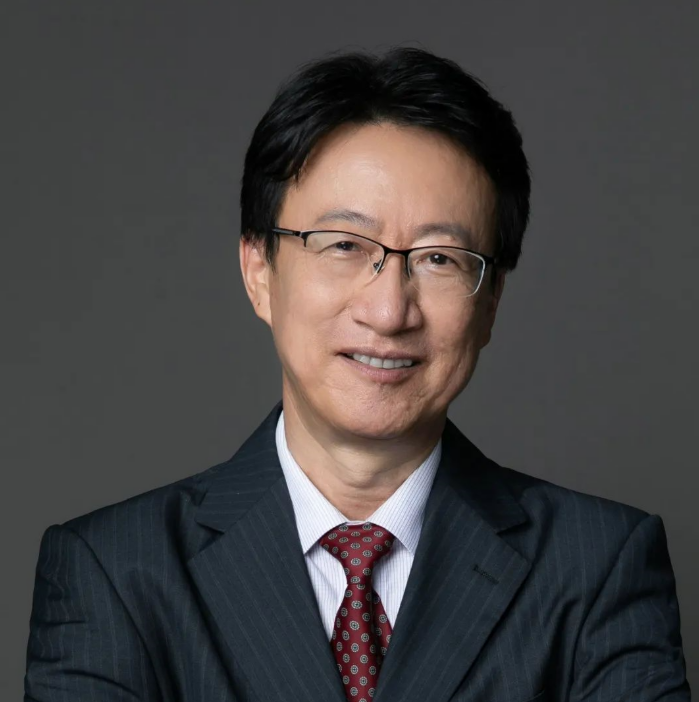Keynote Speakers
Prof. Saim Memon
Department of Industrial R&D in Vacuum Insulation Energy Technologies, Sanyou London Pvt Ltd, UK;School of Engineering and the Built Environment, Birmingham City University, UK;
Jiangsu Sanyou Dior Energy-saving New Materials Co., Ltd (SANYOU DIOR), China
Speech Title: Realistic Energy Loss Reduction with Mild Heating with World’s First Vacuum Insulated Heatable Curtain
Abstract: Meeting urgent climate targets requires rapid, scalable reductions in operational energy use across the built environment and associated thermal-management sectors, where end-use losses from walls, roofs, glazing, refrigeration and pipework account for over 40% of global final energy demand—yet traditional fibrous or polymeric insulation materials struggle to achieve sub-0.20 W·m⁻²·K⁻¹ U-values without excessive thickness, embodied-carbon trade-offs, or compromised fire safety. This research presents a harmonised portfolio of ultra-thin vacuum insulation technologies (VITs), engineered to overcome such limitations by evacuating core materials to ≤10 Pa, thereby minimising convective and gaseous conductive heat transfer. The suite includes standard Vacuum Insulation Panels (VIP), façade-integrated Decorative VIP (DVIP), 4 mm Vacuum Insulated Wallpaper (VIW), 7 mm Vacuum Insulated Curtains (VIC), their heatable variant (VIHC), and modular Vacuum Insulated Bag/Box (VIBB) systems, all advanced to TRL 7–9. Fifteen-millimetre fibreglass VIPs deliver thermal conductivities as low as 2.5 mW·m⁻¹·K⁻¹ (U ≈ 0.16 W·m⁻²·K⁻¹), while 25 mm fumed-silica cores achieve 4.5 mW·m⁻¹·K⁻¹. When embedded in 30 mm DVIP façade cassettes, these systems achieve λ = 7 mW·m⁻¹·K⁻¹ with EN 13501-1 Class A1 fire rating, freeze–thaw durability, and aged performance exceeding 35 years. VIW retrofits reduce solid-brick wall U-values by up to 71% and lower space-heating demand in London homes by 30%, while VIC fabrics with 3 mm removable VIP inserts achieve whole-curtain conductivities of 13 mW·m⁻¹·K⁻¹ and deliver 23% cooling-load savings in single-glazed Riyadh offices; the VIHC variant integrates low-wattage heaters consuming ~1 kWh per three-hour cycle to provide local radiant warmth in cold climates. VIBB containers maintain 2–8 °C for 120 hours in 40 °C ambient conditions, reducing reliance on dry ice or active cooling by 80%. Across building envelopes, transport logistics, AI data centres, and EV battery casings, life-cycle analysis demonstrates that VIT deployment can prevent 15–60 kg CO₂e·m⁻² over 25 years—equivalent to 20–90% abatement in end-use energy waste. This paper argues that modular, shape-flexible vacuum insulation offers an immediately deployable, technically mature solution for deep, demand-side energy reduction essential to real-world climate-change mitigation.
Biography: Professor Saim Memon is an accomplished CEO and Industrial Professor of Renewable Energy Engineering, renowned for bridging the gap between academic research, industrial innovation, and global market impact. With a distinguished academic career rooted in the UK, he holds a PhD in Mechanical, Electrical, and Manufacturing Engineering from Loughborough University, England; a PGCE teaching qualification from the University of Aberdeen, Scotland; an MSc in Mechatronics from Staffordshire University, England; and a BEng (Hons) in Electrical Engineering, awarded with first-class distinction. Prof. Memon is a Chartered Engineer and a Fellow of the Higher Education Academy, and he also holds Qualified Teacher Status awarded by the General Teaching Council for Scotland. His world-leading multidisciplinary research expertise encompasses Electrical, Mechanical, and Renewable Energy Engineering. Recognised internationally as a global public speaker, Prof. Memon ranks among the top 1% worldwide in the field of Energy and across all disciplines according to ScholarGPS over the past five years. This recognition stems from his extensive academic and research contributions, including over 150+ research publications and 37+ industry articles, accumulating more than 2300+ citations with an h-index of over 28+ and an i10-index exceeding 57+. He has served as Editor-in-Chief and Guest Editor for more than five journals and has fulfilled reviewer roles for over 40 journals. Additionally, he has delivered more than 90 invited, keynote, and visiting lectures and engaged in research collaborations with over 40 countries worldwide. Throughout his teaching career, Prof. Memon has delivered 41 modules as module leader in electrical, electronic, mechanical, and renewable energy engineering, consistently achieving over 90% student satisfaction. He has also successfully supervised numerous PhD, MSc, and MEng projects. Prof. Memon's academic leadership is further evidenced by his significant contributions as a Head of research group, degree apprenticeship programs lead, course director for MSc, MEng, and BEng (Hons) programmes, Deputy Head of the School of Engineering, and overseeing programme development, accreditation, and validation.
Prof. Ji-Dong Gu
Environmental Science and Engineering, Guangdong Technion - Israel Institute of Technology, China;Civil and Environmental Engineering, Technion - Israel Institute of Technology, Israel
Speech Title: Anammox Bacterial Ecology and the Effective Implementation in Full-Scale Wastewater Treatment Systems
Abstract: Microbial-driven nitrogen removal is the crucial step in full-scale wastewater treatment plants (WWTPs), a better understanding of the overall nitrogen cycling networks is therefore a prerequisite for the further enhancement and optimization of wastewater treatment processes. Anammox bacteria have a unique affiliation to the different ecological/environmental conditions, and such intrinsic property is a result of their evolution. To further advance the application of anammox in wastewater treatment, metagenomics and metatranscriptomics were used to elucidate the microbial nitrogen removal processes in an ammonium-enriched full-scale WWTPs, which were configured as an anaerobic-anoxic-anaerobic-oxic system for efficient nitrogen removal (99.63%) on a duck breeding farm. A typical simultaneous nitrification-anammox-denitrification (SNAD) process was established in each tank of this WWTP. Ammonia was oxidized by ammonia-oxidizing bacteria (AOB), archaea (AOA), and nitrite-oxidizing bacteria (NOB), and the produced nitrite and nitrate were further reduced to dinitrogen gas (N2) by anammox and denitrifying bacteria. Visible red anammox biofilms were formed successfully on the sponge carriers submerged in the anoxic tank, and the nitrogen removal rate by anammox reaction was 4.85 times higher than that by denitrification based on 15N isotope labeling and analysis. This supports the significant accumulation of anammox bacteria on the carriers responsible for efficient nitrogen removal. Two distinct anammox bacteria, named “Ca. Brocadia sp. PF01” and “Ca. Jettenia sp. PF02”, were identified from the biofilm in this investigation. By recovering their genomic features and their metabolic capabilities, our results indicate that the highly active core anammox process found in PF01, suggests extending its niche within the plant. With the possible contribution of the dissimilatory nitrate reduction to ammonium (DNRA) reaction, enrichment of PF02 within the biofilm may also be warranted. Collectively, this study highlights the effective design strategies of a full-scale WWTP with enrichment of anammox bacteria on the carrier materials for N removal and therefore the biochemical reaction mechanisms of the contributing members.
Biography: Ji-Dong Gu is currently holding a full professorship of the Environmental Engineering, Guangdong Technion - Israel Institute of Technology and also Israel Institute of Technology concurrently. He received his M.Sc. from University of Alberta (Canada), and Ph.D. from Virginia Tech (USA). After a brief post-doc at University of Massachusetts – Lowell, he joined Ralph Mitchell’s Laboratory at Harvard University for 6 years before taking a faculty position at The University of Hong Kong for more than 21 years. After resigning from the University in Hong Kong, he started his new full-time position with Guangdong Technion - Guangdong Israel Institute of Technology in 2020.
His recent research interest includes: 1) carbon and nitrogen cycling, including anaerobic ammonium oxidation and nitrite-dependent anaerobic methane oxidation; 2) oil field microbiology for enhanced oil recovery and pollution remediation; and 3) microbiology of cultural heritage.
His h-index is 95, i10-index 503, and total citations of 33,560 (GoogleScholar). He has been the world top 1% scientists by WoS since 2013. He has published in the areas of applied and environmental microbiology and toxicology with more than 550 refereed scientific journal papers, 42 book chapters. He co-edited a book with Ralph Mitchell on ‘Environmental Microbiology’ (2nd ed, John Wiley-Blackwell. 2010). In the Environmental Science and Engineering category, he is ranked the top scientists and highly cited in China.
He is the editor-in-chief for International Biodeterioration & Biodegradation (2015– ).
He also serves as advisory committee of International Board Member of International Society for Subsurface Microbiology (2016– ); and council member of International Board Member, International Biodeterioration & Biodegradation Society.
More Speakers will be updated…


